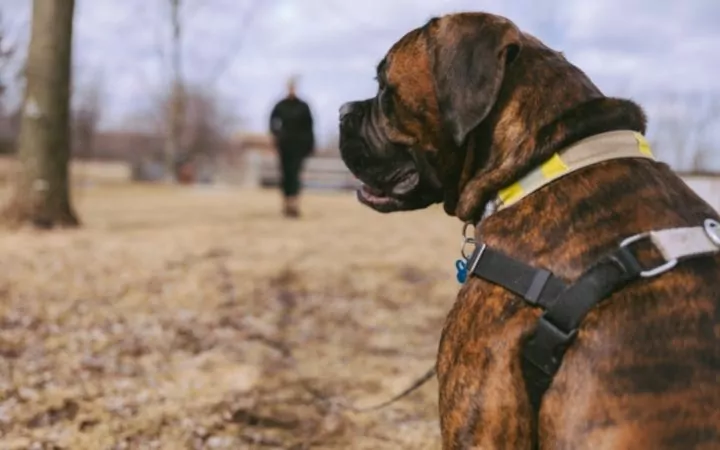If you’d love to work with dogs and have a knack for teaching new commands and tricks, you should consider starting a career as a dog trainer. What kind of background and education do you need to become a trainer, and what’s the best way to develop skills and gain experience?
The good news is that dog training is a diverse industry, and there are many paths you can follow to advance your career. The downside to working as a trainer is it’s also an unregulated trade, and anyone can advertise their services or start a training business. Here’s everything you need to know to get started in this field!
Qualities of a Great Dog Trainer

What qualities should a dog trainer or behaviorist have in terms of their personality and temperament? You might think the most important quality is a passion for dogs, but in truth, the best dog trainers love working with people and have superb communication skills to boot!
If you dislike people or don’t enjoy working with them, dog training is probably the wrong career choice for you. Most of the work is actually training your clients and teaching them how to work with their dogs, rather than directly training dogs yourself.
The best dog trainers are personable, even-tempered, able to control their movements,tone of voice, are open-minded and very, very patient.
What Do Dog Trainers Do?
Trainers and behaviorists teach dog owners better ways to understand and communicate with their puppies and dogs. They evaluate the dogs’ temperaments and dispositions, coach their clients on how to reinforce positive behaviors and correct the negative ones, offer encouragement, progress updates and develop training programs to help their clients meet their goals.
New trainers often start by teaching introductory or “manners” courses for owners with puppies and young dogs, covering topics such as:
- Basic and advanced obedience.
- Canine good citizenship.
- Recall and off-leash work.
- Competition sports like agility, flyball, or dock diving.
As a trainer gains in education, skills, and experience, they can offer more advanced services. They may specialize in training working dogs or focus on a favorite breed or activity.

Another option is to go the behaviorist route and work with clients whose dogs have more challenging problems. Some of the career options for experienced trainers and behaviorists includes:
- Scent dog work, lure training, herding, and hunting.
- Solving aggression and problem behaviors.
- Specialized training for assistance, therapy and service dogs.
- Behavior specialists for dogs with dangerous or complex problems.
How To Get Started as a Dog Trainer
While there’s no formal education requirements for trainers and most are largely self-taught, continuing education (CE) is critical if you want to gain and maintain advanced training certifications and develop your career. You’ll likely need at least a high school diploma or have passed your general education development exam (GED) to find entry-level employment as a trainer, but it varies.
There’s many different routes to becoming a professional dog trainer and the best path for you will just depend on your background, education, experience and career goals. Here’s the most common ways for new trainers to gain experience and land their first job:
Research Dog Training and Train Your Own

The best way to gain experience is to train your own dogs, and to research the history of dog training, training theory and behavioral conditioning methods before you apply for an entry level position. Become familiar with the vocabulary and learn about techniques like positive reinforcement, clicker training and reward-based training programs.
Look for a Position That Offers Training
Many big-box pet stores, and training facilities offer in-house instruction for their new, inexperienced employees, so that’s a great way to get your foot in the door and lay a solid foundation for the future. You may even be able to get paid to do your class work, and some employers also offer support in gaining advanced certifications.
Start an Apprenticeship
Another option is to do an apprenticeship under a local trainer whose skills you admire and hone your training abilities through direct observation and instruction. You’ll have the chance to see how your mentor interacts with clients and deals with challenging problems, and you’ll also gain experience in building and managing a small business.
Take Classes Though Local Schools or Online
There are many for-profit schools that offer in-person and online classes for credit in dog training,and some of these programs may also prepare you to sit for your certification exams. They run the gamut from single course offerings for a few credits of CE to complete programs that prepare you to start a business in dog training from the ground up.
Since they can run into the thousands of dollars, it’s best to fully research any programs you’re interested in and talk with local trainers about their value before you commit. Some of the most popular training programs include the Karen Pryor Academy, Animal Behavior College (ABC), and the International School for Certified Dog Trainers.
Different Types of Dog Training Professions

While it’s not required to be a dog trainer or behaviorist, many do pursue professional certification and higher education to advance their careers. There are essentially four types of professional dog trainers and behaviorists, and they vary mostly in the degrees and certifications they hold.
Dog Trainer or Behaviorist
Anyone who trains dogs can call themselves a dog trainer. There’s no education or credentialing requirements needed to start work as a trainer. Other titles for an uncertified trainer include obedience instructors, pet therapists and behavior counselors.
There’s no legal difference between a dog trainer and a behaviorist, but ideally a behaviorist should have at least a bachelor’s degree in biology, animal behavior or a related subject.
Certified Professional Dog Trainer (CPDT)
A certified dog trainer is a professional with documented experience who has taken additional courses in dog training and behavior and has passed an exam to demonstrate their knowledge and skills. Requirements vary from program to program, but typically you’ll need 2 to 5 years of experience as a trainer to qualify.
Once obtained, a certificate is usually good for several years and can be renewed as long as the trainer meets the CE and work requirements (usually around 300 hours for the previous 3 years) and submits their payment and documentation. Programs that offer certification for dog trainers include:
- The Certification Council for Professional Dog Trainers (CCPDT) is one of the most
popular programs for dog trainers and offers 2 levels of certification: the CPDT-KA
(knowledge assessment) and CPDT-KSA (knowledge and skills assessment).
- The International Association of Canine Professionals (IACP) offers an exam to become
a Certified Dog Trainer (CDT) to members with at least two years of experience. Once
you have your initial IACP-CDT credential you can pursue the advanced or CDTA
certificate, which includes a video demonstration of your training skills.
behaviorists of all levels to follow the best scientific practices and has some stringent
requirements for certification. You’ll need 300 hours of experience to qualify as an
Associate Certified Dog Behavior Consultant (ACDBC) and at least 500 for a Certified
Dog Behavior Consultant (CDBC), in addition to submitting CE credits, case studies and
sitting for the exam. They also have a program for those who work in animal shelters
and want to be Certified in Shelter Behavior for Dogs (CSB-D).
- The National Association of Dog Obedience Instructors (NADOI) is one of the oldest
organizations that certify dog trainers and is ideal for head trainers and those who run
their own businesses. You’ll need at least 5 years experience to qualify, and they also
offer specialty certificates in areas like puppy, novice, utility, open, tracking and agility
training.
Certified Applied Animal Behaviorist (CAAB)

Trainers who’ve completed advanced degrees can become Certified Applied Animal Behaviorists or CAABs, and use their expertise in behavior modification, abnormal pet behaviors and human psychology directly to help their clients work through problems with their dogs and cats. They may work independently or find clients through referrals from local veterinarians and dog trainers.
Veterinary Behaviorist
The most advanced and skilled dog trainers and behaviorists are doctors of veterinary medicine (DVM) with specialty training in animal behavior. Once they’ve finished their residency and passed the exam, they’re granted the status of a diplomate with the American College of Veterinary Behaviorists (ACVB).
Board-certified behavior specialists often work with clients whose animals have complex problems and need medication in addition to training assistance.
Where Do Dog Trainers Work and What’s the Job Like?
You’ll find dog trainers working in a wide number of industries including veterinary clinics, animal shelters and rescues, boarding facilities, pet stores and doggy daycares, and many are Self-employed.
Working as a dog trainer usually means you’re busiest in the evenings and over the weekends and requires continuing education that can eat into your spare time. It takes a lot of time and dedication to become certified as a professional dog trainer, but it’s also incredibly rewarding work!
